Introduction
The growth of e-commerce businesses hinges on their ability to adapt to an ever-evolving market, optimize the customer experience, and leverage new technologies to stay ahead of the competition. Crafting an effective e-commerce strategy requires a deep understanding of key components that drive business growth, such as market demand and competitive landscape. Strengthening your brand identity is crucial for achieving e-commerce success, as it sets you apart from competitors and fosters trust with your customer base.
Attracting and retaining customers requires a strategic approach, including targeted customer acquisition campaigns, personalized experiences, and a seamless user journey. Cultivating customer loyalty is essential for maintaining a competitive edge, with personalized loyalty programs and data-driven strategies playing a pivotal role. Gaining insights into customer behavior and preferences is crucial for successful e-commerce strategies, and leveraging hyper-personalization and data-driven tactics can elevate the shopping experience.
Boosting revenue requires refining strategies with precision, leveraging data analytics, and incorporating innovative promotional tactics. Adapting to changing market conditions is essential, as the e-commerce industry is dynamic and constantly evolving. Implementing technology effectively is crucial for growth, as it enables businesses to gain insights, streamline operations, and meet customer expectations.
Additional growth strategies, such as referral marketing, social media engagement, and conversion rate optimization, can further propel e-commerce businesses forward. Overall, a comprehensive and adaptable approach is key to achieving success in the ever-expanding realm of e-commerce.
Why E-commerce Strategies Are Crucial
Optimizing an e-commerce platform for growth is akin to finding the right pieces for a puzzle. It requires a careful balance between attracting new customers and retaining current ones, all while ensuring the stability and performance of the website. Key to this endeavor is staying abreast of the rapid technological advancements that define the e-commerce landscape.
Businesses need to adopt innovative approaches to not only increase sales but also foster customer loyalty.
Utilizing strategies such as Conversion Rate Optimization (CRO) is foundational for e-commerce growth. By analyzing customer interactions and streamlining the online purchasing process, businesses can enhance user experiences and drive sales. This involves a continuous process of testing and improving various elements of the e-commerce platform, from website design to checkout procedures.
E-commerce doesn’t end with setting up a store; it’s about creating a seamless customer journey from initial interest to post-purchase support. Ensuring that customers can easily navigate your website, find what they need and receive timely support if they encounter issues is crucial. This might involve integrating tools like shipping calculators, chatbots, and scheduling systems to improve the overall shopping experience.
Keeping an eye on emerging trends is also vital. As recent reports indicate, despite economic uncertainties, there's steady progress in technology deployment in retail, with a focus on self-checkout systems and combating staff retention challenges. Artificial Intelligence (AI) and Machine Learning (ML) are unlocking new potential, while partnerships with innovative startups are leading the way in e-commerce advancements.
In summary, the growth of an e-commerce business hinges on its ability to adapt to an ever-evolving market, optimize the customer experience, and leverage new technologies to stay ahead of the competition. Understanding the products and services that resonate with customers will guide the introduction of new offerings, positioning your brand as a leader in the digital commerce space.
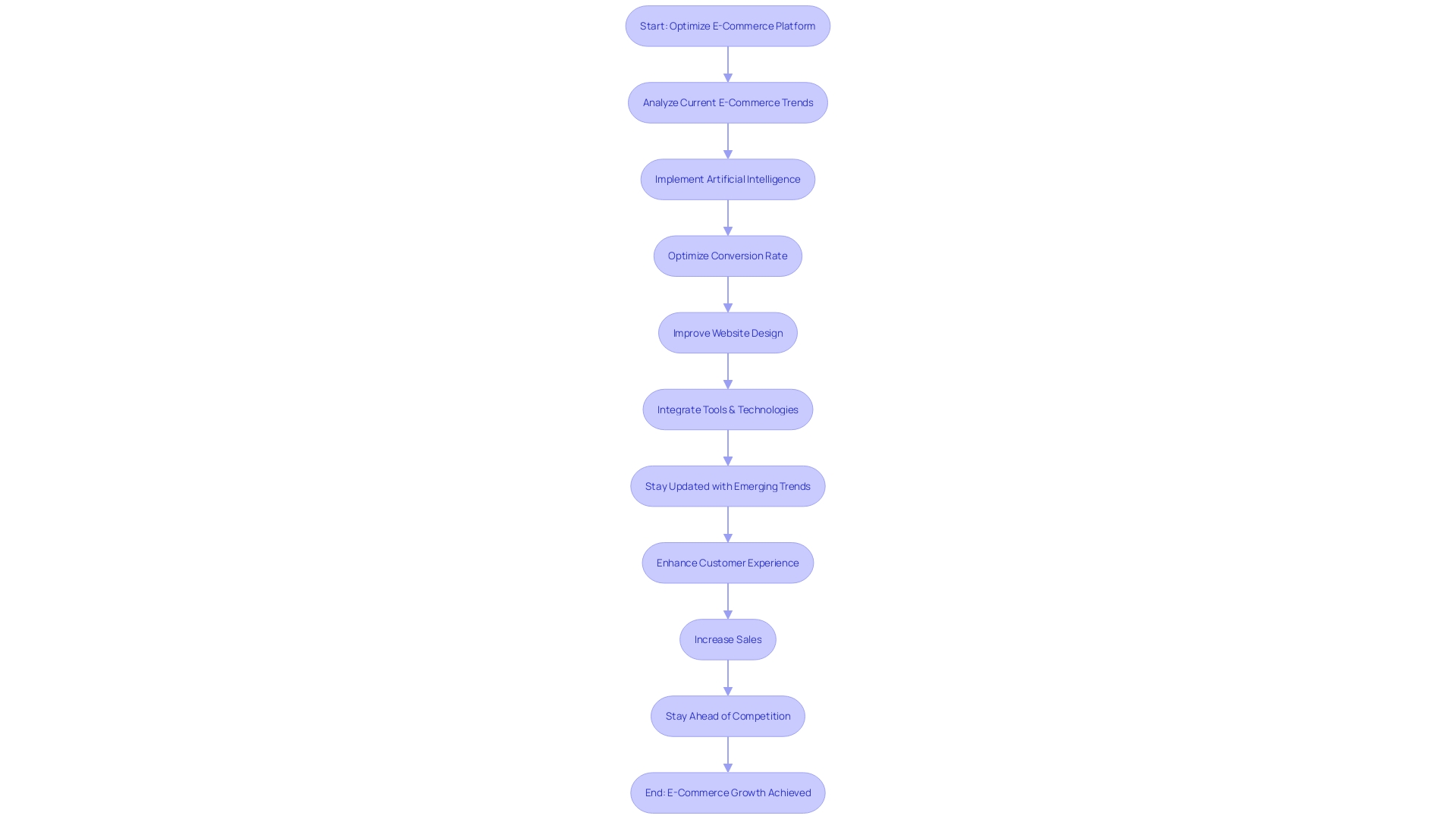
Key Components of an Effective E-commerce Strategy
Crafting an effective e-commerce strategy requires a deep understanding of key components that drive business growth. At the heart of any thriving online business lies a well-considered product or service offering. The selection process should be guided by an evaluation of market demand, utilizing tools like Google Trends and social media analysis to tap into consumer interests and their dynamic nature.
Understanding the competitive landscape is also crucial. Identifying and analyzing direct competitors, their offerings, pricing, and marketing strategies can provide invaluable insights. This strategic planning at the outset is vital for long-term success in e-commerce, which encompasses not just online retail but also extends to electronic payments, online auctions, and internet banking.
The landscape of e-commerce is ever-evolving, as evidenced by recent surveys highlighting the shift in store roles to drive sales, the adoption of in-store technology, and the prioritization of self-checkout systems. Retailers continue to innovate, despite economic uncertainties, and are exploring the potential of AI and machine learning to stay competitive.
In addition, conversion rates play a pivotal role in measuring the success of an e-commerce platform. Understanding and accurately calculating these rates can significantly influence conversion rate optimization (CRO) efforts. By ensuring that the initial steps in launching an e-commerce business are well-informed and strategically sound, businesses can set the stage for sustained growth and success.
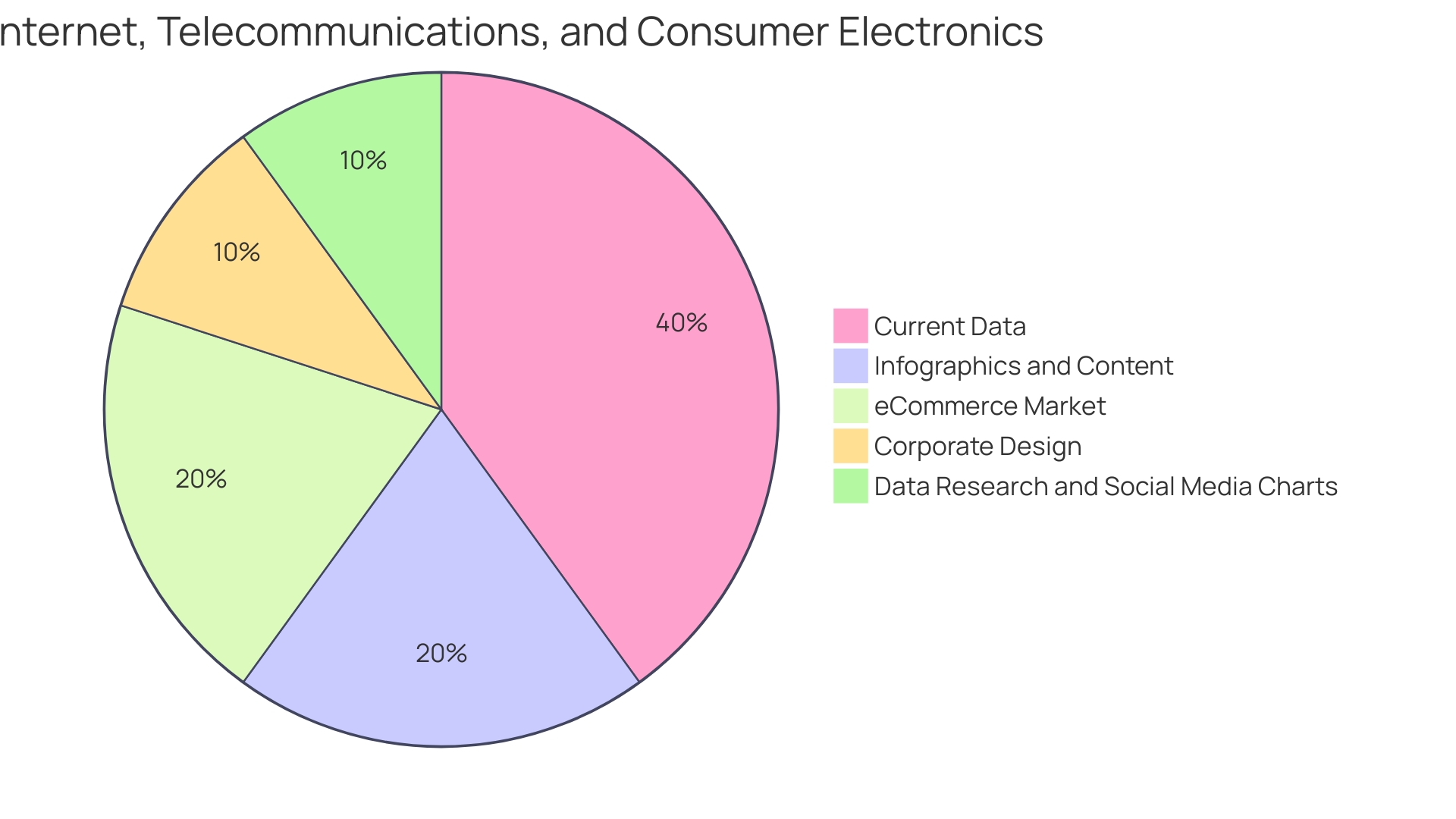
Strengthen Your Brand
Crafting a robust brand identity is a cornerstone for achieving e-commerce success. It's not merely about having a visually appealing logo or a catchy tagline; it's about creating an entire ecosystem that resonates with your customer base, setting you apart from competitors and fostering trust. To illustrate, consider the case of Forte Whey, a brand that successfully signifies strength and modernity with a bold typographic logo and a dynamic color palette of neon, black, and beige.
This design strategy doesn't just signal a commitment to a healthy lifestyle; it stands as a symbol against the mundane, artfully combining aesthetic appeal with the brand's core values.
Another prime example is Gothrider Coffee, started by Phil Kyprianou. Gothrider distinguishes itself with an edgy, rebellious aesthetic, emerging as a unique player in the coffee market. Kyprianou's journey from digital marketing for major events to creating a distinct e-commerce brand showcases the power of understanding market gaps and customer preferences, ultimately leading to the creation of a brand that is as unique as its products.
In the fitness sector, a competitive and trend-driven industry, Equinox has managed to maintain growth and relevance even after three decades. This is a testament to the importance of a well-crafted brand identity that evolves with its clientele and market demands. With a focus on a holistic fitness and lifestyle experience, Equinox's brand identity resonates with consumers looking for more than just a gym.
These cases underscore the significance of a brand's identity in driving growth and penetrating new markets, even in industries fraught with competition. As we navigate the e-commerce landscape, it's clear that a compelling brand identity is not just about aesthetics—it’s about embodying the values and aspirations of your customers, and consistently delivering on that promise. The statistics speak for themselves, with a clear indication that consumers are increasingly discerning, seeking authenticity and innovation in the brands they choose.
Attract New Customers
Cultivating a robust e-commerce customer base is not just about having a great product; it's about crafting a strategic approach to attract and retain customers. For example, Lemonaid Health, a telehealth company, found themselves in a complex market with a range of services and varying costs per customer acquisition. By recognizing the importance of a balanced media strategy rather than an over-reliance on paid search, they began to tap into a more diverse set of channels for customer acquisition.
Similarly, Filson's work with Bamboo's growth insights service highlights the effectiveness of using data-informed models to forecast e-commerce sales. Their ability to predict sales within a 0.4% margin of accuracy underscores the power of a well-planned strategy based on customer lifetime value and acquisition costs.
In terms of platforms, Twitter and Quora stand out for their unique advantages in capturing customer interest. The interactive and news-driven nature of Twitter has led to a significant percentage of its users making purchases based on conversations on the platform, while Quora's Q&A format provides a space for in-depth engagement and thought leadership.
Moreover, email marketing remains a powerful tool in the e-commerce arsenal. Building and maintaining a robust email list is essential, as this channel provides direct access to customers, offering opportunities for personalized engagement and fostering repeat business.
In the context of customer retention, it's important to create a seamless user experience. This involves ensuring website performance, fast loading times, and a responsive design, enabling a fluid journey from browsing to checkout. These elements are crucial in maintaining customer satisfaction and loyalty.
E-commerce is a dynamic field that requires continuous investment in customer relationships and technological capabilities. By taking a multi-faceted approach that incorporates data science, strategic platform use, and a focus on customer experience, online retailers can position themselves for sustained growth and competitive advantage.
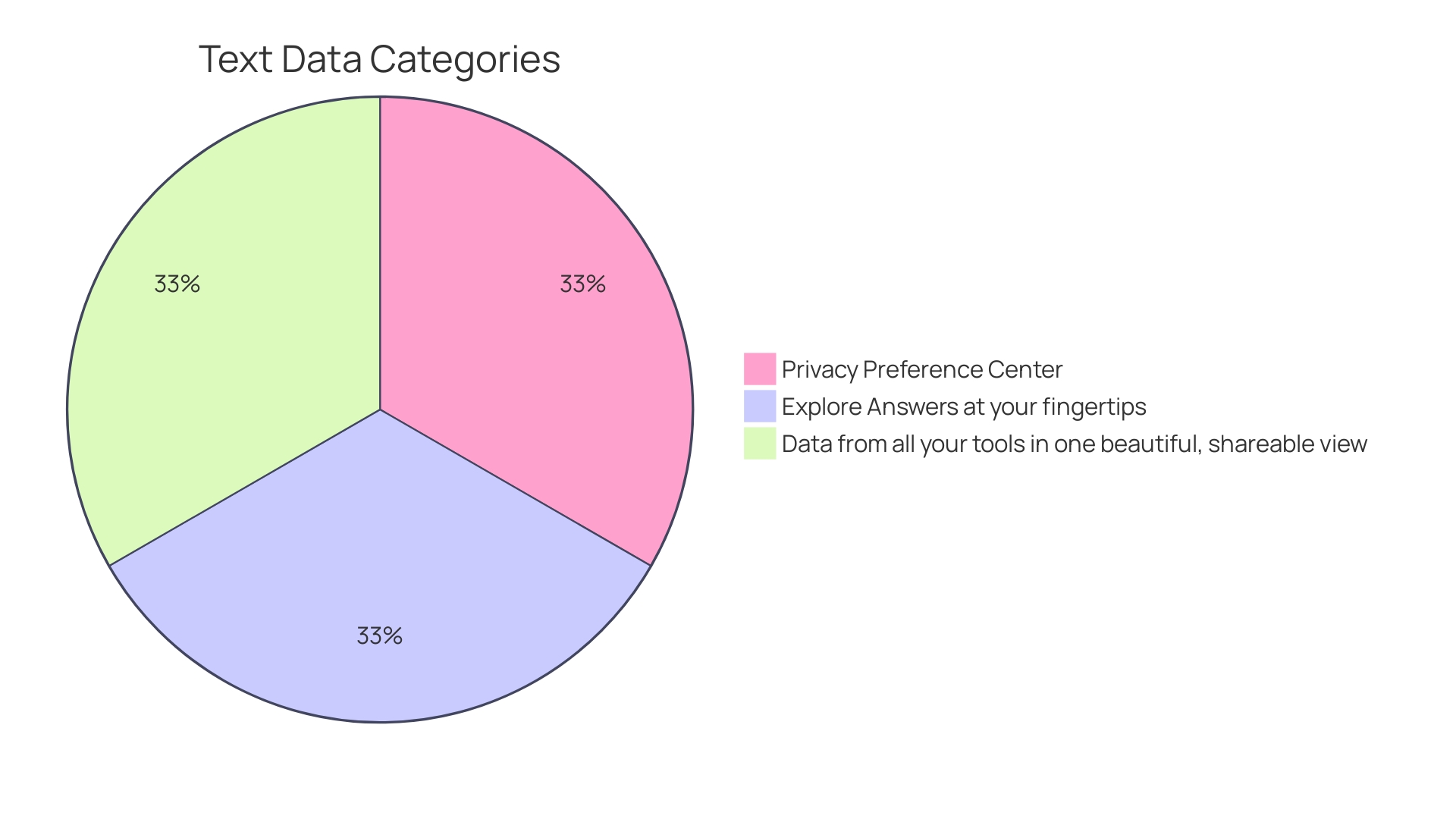
Retain Current Customers
Cultivating customer loyalty is a multifaceted endeavor, essential for maintaining a competitive edge in the e-commerce space. Personalized experiences and loyalty programs, tailored to consumer behaviors and preferences, are central to fostering long-term customer relationships and encouraging repeat business. By implementing simplified loyalty program rules, maintaining clear communication, and ensuring seamless enrollment, businesses can enhance engagement and loyalty.
It's crucial for these programs to scale with the company's growth, adapting to the evolving technology landscape.
Staying attuned to customer expectations in this era of digital transformation can substantially increase customer retention. Insights reveal that customers who feel a brand consistently delivers quality products and exceptional experiences are more likely to remain loyal. They not only make more frequent purchases but also contribute to a higher lifetime value.
E-commerce companies can drive this loyalty by leveraging data-driven strategies that reflect the nuanced types of customer loyalty that exist today.
A global report highlighted the effectiveness of personalized loyalty strategies in retaining customers, with many retailers seeing a surge in loyalty program memberships and increased purchases of private brand products. This underscores the importance of customized offerings and member-exclusive perks.
To further amplify customer loyalty, understanding the post-acquisition value (PAV) is key. This metric helps in determining the ongoing worth of a customer after their initial purchase, factoring in the lifetime value minus acquisition costs. Accurate PAV calculations enable businesses to strategically invest in customer acquisition, maximizing revenue over time.
In light of rising acquisition costs, as reported by firms like Optimove, and the need for data access to mitigate these expenses, companies must balance the focus on both acquiring new customers and retaining existing ones. By continuously gathering customer feedback and monitoring preferences, businesses can adapt their offerings to meet changing demands, thus strengthening retention rates.
Moreover, e-commerce innovation, driven by startup partnerships, is shaping the future of online shopping. As consumer needs and habits evolve, these collaborations are seeking new ways to enhance the shopping experience, solidifying customer loyalty in the process.
Overall, a strategic approach to customer service, embracing personalization, data analysis, and innovative loyalty programs, can significantly boost customer lifetime value and revenue growth for e-commerce businesses.
Understand Your Target Audience
Gaining insights into customer behavior and preferences is a cornerstone of successful e-commerce strategy. Companies like Nets, with decades of experience in digital payment solutions, demonstrate the importance of presenting technical data in an engaging way to facilitate user discovery and interaction. By transforming complex tables into user-friendly formats, they've enhanced the customer experience and demonstrated a key principle: understand and cater to the needs of your audience.
Surveys and questionnaires offer a direct line to customer feedback, enabling e-commerce leaders to tailor their services to specific needs. Well-crafted surveys, particularly those employing a semantic differential scale, can pinpoint customer preferences with precision.
Contemporary e-commerce has evolved beyond traditional online transactions. As thought leaders like Beth Ann Kaminkow suggest, the term 'e-commerce' should expand to 'everywhere-commerce' to reflect the blend of digital and physical shopping experiences. This shift underscores the need for businesses to adapt to a holistic view of commerce, where customer engagement can happen at any point and through any medium.
Artificial Intelligence (AI) is at the forefront of this transformation, providing personalized shopping experiences that resonate with individual customers. As we look to trends like livestreaming and social commerce, it's clear that the creative potential of commerce is boundless. These trends are not only reshaping how we shop but also how businesses must approach their growth strategies.
Incorporating these insights into your e-commerce strategy can lead to highly targeted campaigns that resonate with your customers, much like the innovative approach taken by Nets. Understanding the full spectrum of commerce, and leveraging AI to meet customer needs, are essential steps in fostering a thriving e-commerce platform.
Boost Revenue
To drive e-commerce growth and profitability, it's essential to refine your strategies with precision, leveraging insights from both data analytics and innovative promotional tactics. A prime example of data-driven decision-making is the approach taken by Filson in partnership with Bamboo. By developing a customizable forecasting model, Filson effectively predicted e-commerce sales for the 2023 Holiday Season with impressive accuracy, forecasting one month's sales at 99.6% of the actual figures.
This precision in forecasting enables e-commerce directors to invest confidently in growth initiatives, understanding the impact on customer acquisition costs, lifetime value, and advertising ROI.
The e-commerce industry is projected to reach a global worth of $6.3 trillion this year, with online sales expected to account for over 20% of all retail sales by 2024. This potential for growth underscores the importance of optimizing pricing strategies, engaging in upselling and cross-selling, and crafting compelling promotional campaigns. It's not just about setting prices but understanding the market dynamics of demand and supply to align with the marginal cost of production, thereby achieving optimal pricing.
Furthermore, the success of your e-commerce platform hinges on providing an outstanding user experience, presenting products clearly and attractively, and simplifying the purchasing process. Currys, for example, realized significant operational efficiencies by upgrading their marketing campaign setup, automating tasks to better engage customers with timely and relevant content.
In essence, the fusion of strategic investments in technology, data science, and customer-centric promotional campaigns can lead to a significant increase in average order values and a robust bottom line, propelling your e-commerce business toward sustainable growth.
Top E-commerce Strategies for Success
Achieving e-commerce success requires a blend of strategic planning and leveraging the latest industry innovations. Selecting the right e-commerce platform is a critical decision that will impact your business's growth trajectory. For instance, Shopify stands out as a user-friendly option with a drag-and-drop interface, allowing for seamless online store setup, even for those with limited coding experience.
The platform's customizable themes and integrated hosting services streamline the process of establishing an online presence.
Optimizing your website is another vital strategy. A well-designed website that is easy to navigate and SEO-friendly can significantly improve user experience and conversion rates. The goal is to create an online environment that is both inviting and efficient, guiding customers smoothly from browsing to purchasing.
Incorporating features like shipping calculators, chatbots, and scheduling tools can enhance the functionality of your site.
Recovering abandoned carts is a challenge that can be addressed through targeted cart recovery campaigns. These initiatives can nudge customers towards completing their purchases and, consequently, boost your sales figures. Building a robust email list and engaging in targeted email marketing are effective ways to foster customer relationships and promote repeat business.
In an ever-evolving market, staying abreast of consumer trends and demands is essential. Utilizing tools like Google Trends and social media analysis can offer valuable insights that inform product selection and marketing strategies. Additionally, keeping an eye on the competitive landscape helps in differentiating your offerings and positioning your brand for success.
The e-commerce ecosystem is vast, encompassing various markets from beverages to household essentials. As such, it's imperative to understand the specific dynamics of the segments relevant to your business. By doing so, you can tailor your strategies to better meet consumer needs and drive growth in a competitive digital economy.
Adapting to Changing Market Conditions
The e-commerce industry is a dynamic and ever-evolving space that demands businesses to constantly innovate and adapt to maintain their competitive edge. With a landscape that's defined by swift changes in consumer behavior, heightened expectations for customer service, and technological advancements, companies must be agile and informed to thrive. By examining the journey of successful e-commerce ventures such as an online marketplace for independent designers that pivoted to solving shipping for SMBs, or the growth of Chess.com into a digital community hub, we can extract valuable lessons.
These case studies illustrate the importance of flexibility and the willingness to pivot when faced with operational challenges or when identifying new market opportunities. Additionally, current trends, such as the integration of artificial intelligence in personalized shopping experiences, are redefining the standards of e-commerce. The market's expansive nature, covering a spectrum of industries and a variety of goods from beverages to household essentials, underscores the immense potential for growth.
However, only those who can swiftly adapt to market fluctuations and adopt innovative technologies will be able to capitalize on these opportunities. Retail analyst Natalie Berg reminds us that the market is in a constant state of flux, with retailers who fail to adapt to cultural shifts and technological investments being left behind. This sentiment is echoed in the eCommerce market's statistics, which show a broad reach across numerous markets and a significant impact on the global economy.
For businesses aiming to scale and succeed, the key lies in understanding these trends, leveraging data, and remaining open to change.
Implementing Hyper-Personalization and Data-Driven Strategies
Embracing hyper-personalization in e-commerce means delivering an unparalleled shopping experience that aligns perfectly with individual customer preferences and behaviors. By employing advanced analytics and personalized technology, e-tailers provide tailored experiences that deeply resonate with their consumers. This strategy not only boosts customer satisfaction but also significantly elevates conversion rates.
Take the example of Zara, the Spanish fashion giant, which has woven artificial intelligence (AI) into the very fabric of its business model. Zara's strategic AI deployment spans from an astute supply chain to real-time customer engagement. Tools such as RFID tagging and machine learning empower Zara to maintain a razor-sharp competitive edge.
A shining testament to their approach is their Just-Intelligent system, which allows for dynamic inventory management and a remarkably swift design-to-store process, sometimes in as little as one week.
Further illustrating the power of hyper-personalization is the recent advent of Large Language Models (LLMs) such as ChatGPT, which can be harnessed to elevate personalization strategies. These technological advancements are not just futuristic concepts but are already making headway in the retail sector. The introduction of checkout-free stores like the Zippin-powered outlet in Dublin Airport is a prime example of how AI and machine learning can streamline the shopping experience for consumers.
Personalization starts with understanding the customer, much like a barista who knows your coffee order by heart. It's creating a culture centered around the customer at every touchpoint. According to recent discussions with Elizabeth Tobey from NICE, the inception of personalization begins with the 'channel of choice'—meeting customers at their preferred touchpoints.
In an era where 80% of customers crave personalized experiences, retailers are shifting towards composable commerce. This innovative approach enables businesses to quickly adapt to market trends through APIs and microservices, offering a more personalized range of products and services.
The essence of hyper-personalization lies in cultivating a customer-centric culture and ensuring every decision supports a superior customer experience. After all, customers are more likely to remain loyal to brands that understand and anticipate their needs. Unified inventory systems are now a fundamental requirement for retailers to offer seamless omnichannel experiences, further emphasizing the significance of a personalized approach in today's digital commerce landscape.
Leveraging Technology for Growth
The dynamic world of e-commerce is continuously reshaped by technological advancements, where efficiency and innovation are paramount. Successful enterprises like Lemonaid Health and Zara exemplify the power of embracing technology for growth and customer engagement. Lemonaid Health, a telehealth provider, tackled the complexities of its paid media strategy by addressing its unique customer acquisition costs and lifetime values, which varied significantly across its service range.
The company's significant reliance on paid search was reevaluated to distribute its media budget more effectively and to explore other channels with potentially better ROI.
On the retail side, Zara, the Spanish fashion giant, has seamlessly integrated AI into its operations, from supply chain management to enhancing customer interactions. This strategic move has allowed Zara to maintain its competitive edge by utilizing real-time analytics and machine learning to optimize inventory and logistics.
These case studies exemplify how leveraging technology is not just about automating processes but also about gaining insights and learning at an accelerated pace. The key to leveraging technology in e-commerce lies in the continuous search for information that challenges current strategies and brings to light new customer and market trends.
With the e-commerce sector projected to grow significantly, reaching $6.34 trillion by 2027, and companies like MediaMarkt and Coupang showcasing ambitious expansions, it's clear that technology is the linchpin of e-commerce evolution. The use of all-in-one platforms, as highlighted by retail technology expert Jennifer Richards, is one of the many innovations set to redefine the shopping experience.
In this rapidly evolving landscape, e-commerce businesses must focus on technological solutions that enable them to scale, meet customer expectations for prompt service, and thrive amidst fierce competition. As the digital economy expands, incorporating robust e-commerce strategies and priced digital services will be essential for businesses aiming to capitalize on this growth.
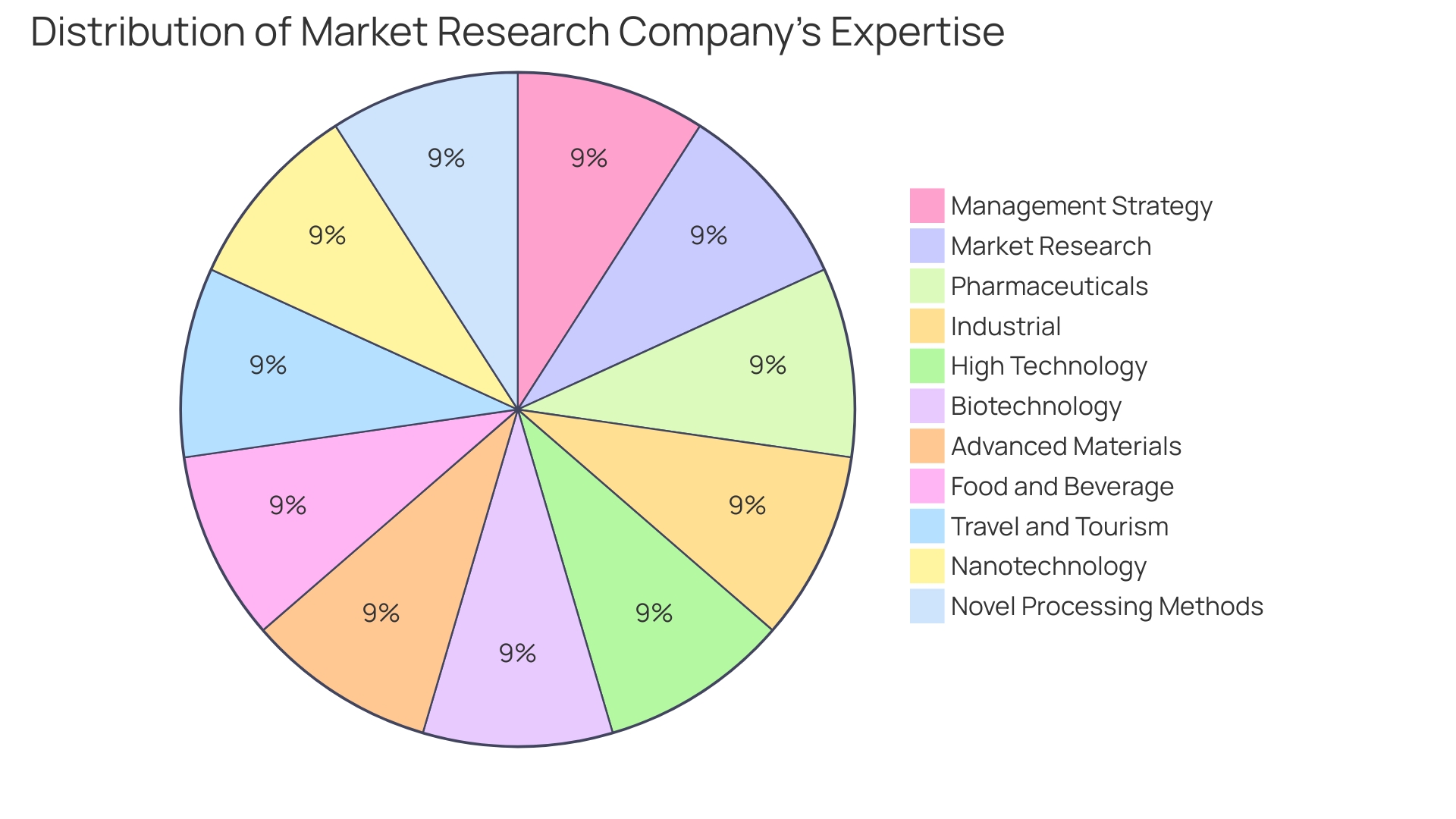
Additional Growth Strategies
E-commerce growth strategies are multifaceted and require a dynamic approach to keep up with the ever-evolving online marketplace. Among the plethora of tactics available, referral marketing has emerged as a powerful engine for growth. Referral programs capitalize on the influence of satisfied customers by incentivizing them to promote your brand, effectively turning them into a motivated sales force.
The success of these programs hinges on their ability to foster organic growth through trusted recommendations.
Ensuring your e-commerce platform stands out in a crowded digital landscape involves leveraging the power of social media and content marketing. These platforms are not merely channels for promotion; they serve as interactive spaces where you can engage with your audience, provide valuable content, and build a community around your brand. Meanwhile, customer retention strategies play a vital role in sustaining growth.
It is essential to not just attract new customers but also to nurture and retain existing ones, thereby increasing their lifetime value.
Conversion rate optimization (CRO) is another cornerstone of e-commerce success. By continuously analyzing and improving every aspect of the user experience, from landing pages to checkout processes, you can significantly increase the percentage of visitors who convert into paying customers. Understanding the average e-commerce conversion rates within your industry and striving to exceed them can place you among the top-performing online businesses.
The digital age brings with it a plethora of tools and platforms that can assist in tracking and refining these growth strategies. From sophisticated analytics to user-friendly interfaces, the right technology can provide insights into customer behavior patterns and streamline the management of your e-commerce initiatives. As industries evolve and consumer needs shift, staying informed about the latest research and benchmarks in digital marketing and e-commerce is crucial for maintaining a competitive edge.
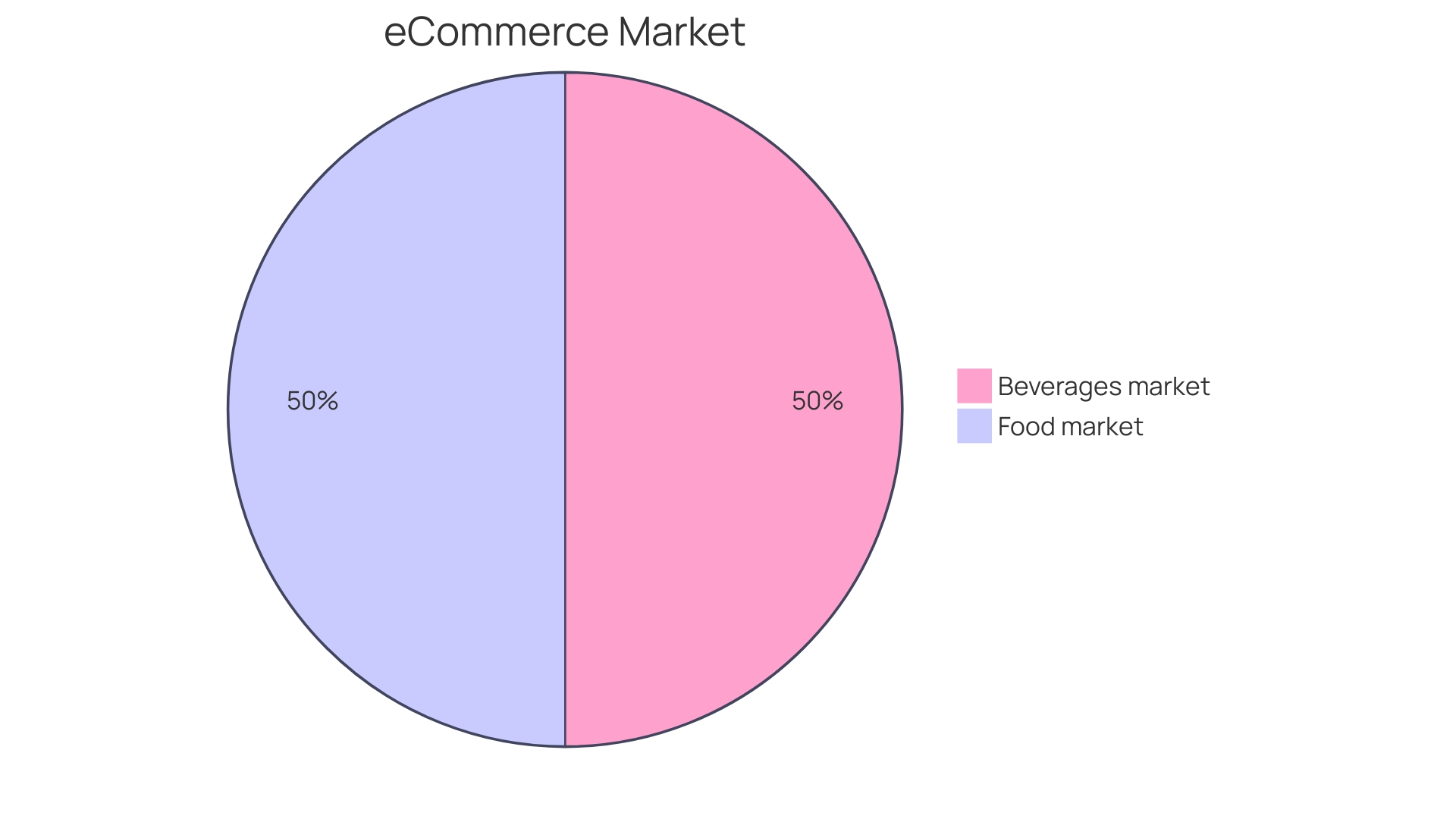
Conclusion
In conclusion, crafting an effective e-commerce strategy requires optimizing the customer experience, leveraging new technologies, and staying ahead of the competition. Conversion Rate Optimization (CRO) and a seamless user journey are crucial for attracting and retaining customers. Strengthening brand identity sets businesses apart and fosters trust.
Personalized loyalty programs and data-driven strategies are essential for cultivating customer loyalty. Gaining insights into customer behavior and preferences through hyper-personalization and data-driven tactics is crucial. Boosting revenue involves refining strategies, leveraging data analytics, and incorporating innovative promotions.
Adapting to market conditions and implementing technology effectively are essential for growth. Additional strategies like referral marketing and social media engagement can further propel e-commerce businesses. A comprehensive and adaptable approach, combined with leveraging technology and data-driven strategies, is key to success.
In the dynamic e-commerce industry, understanding key components and staying ahead of market trends are vital. By positioning themselves as industry leaders and driving sustained growth, businesses can thrive in the ever-expanding realm of e-commerce.





